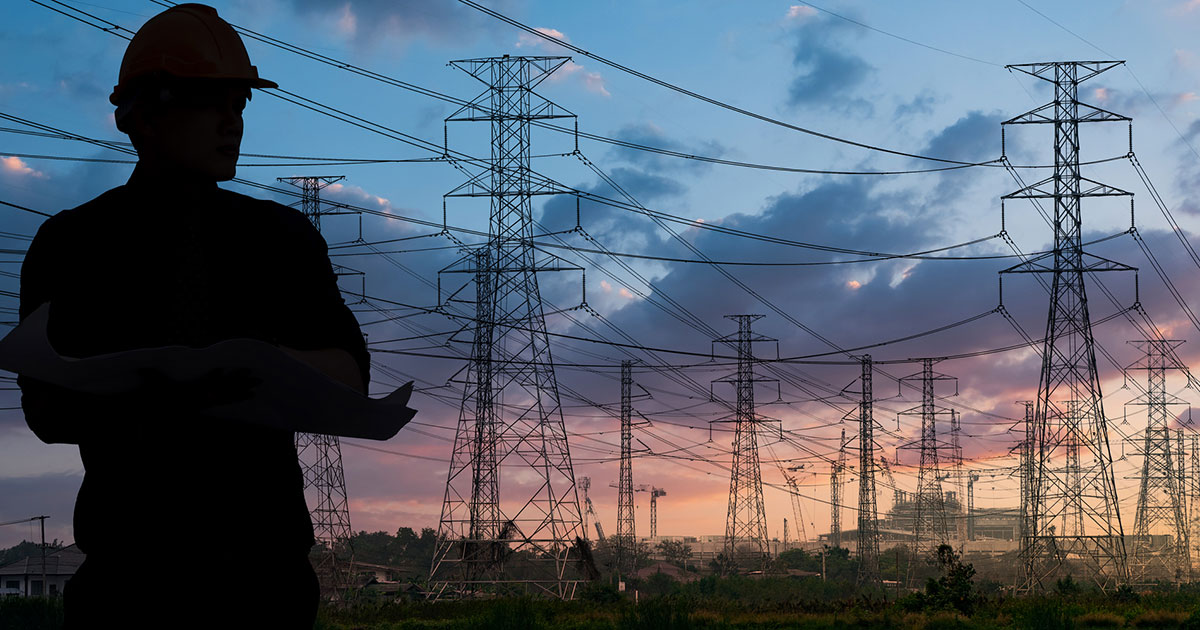
Many homebuyers—especially those with young children—may quickly eliminate from consideration houses near high-voltage power lines, because they fear the lines will increase cancer risk and threaten their families’ health in other ways.
So far, however, science has been unable to substantiate health risks from such exposure.
The concern with high-voltage lines, which carry electrical energy over long distances, is the strong electromagnetic fields (EMFs) they produce. Some researchers suspect (but haven’t been able to produce the evidence to confirm) that individuals with significant exposure to these fields may be at increased risk of cancer.
Power lines aren’t the only sources around us emitting EMFs. Cell phones, microwave ovens, computers, wi-fi networks, radios, hair dryers, electrical appliances and many other common household items produce electromagnetic fields, some at higher levels than power lines, although for shorter periods of time.
Studies show the strength of electromagnetic field exposure decreases quickly as the distance from the source increases. Being just a few hundred feet away from high transmission lines may result in EMF exposure no different than what you’d experience using a typical household appliance, like a microwave.
For decades, people have raised concerns over whether living near power lines may lead to cancer, but scientific studies suggesting such a connection either haven’t been replicated or haven’t had the clear results scientists require to prove a link. A working group of the World Health Organization’s International Agency for Research on Cancer in 2002 concluded that EMFs produced by power lines at most were “possibly” carcinogenic.
One reason a definitive conclusion hasn’t been reached: the difficulty of measuring the health effects from the many electromagnetic fields our bodies are exposed to—and the EMF radiation those fields produce.
In this article, we’ll explore:
- What are electromagnetic fields?
- Cancer from power lines: What the research says
- Other sources of electromagnetic fields
- What to do if you’re concerned about nearby power lines
If you’re interested in getting screened for cancer or if you’ve been diagnosed with cancer and want a second opinion, call us or chat online with a member of our team.
What are electromagnetic fields?
EMFs are a combination of electric fields and magnetic fields. Both are invisible forms of energy, also known as radiation. Electric fields are formed in the immediate area around a stationary electric charge. Magnetic fields are generated by electric charges that are in motion.
The strength of an electric field is determined by voltage, which is the pressure needed to move electrons through a wire. The higher the voltage, the greater the electric field. A magnetic field is created when a current flows through a wire or electric device, increasing in strength as the current intensifies.
While electric fields have difficulty passing through walls or other objects, magnetic fields can pass through most material, including buildings and people. For that reason, magnetic field exposure raises more concern about its impact on human health.
Portions of the electromagnetic spectrum do have emissions that may pose a risk of cancer. The spectrum ranges from extremely low-frequency radiation, such as that generated by overhead power lines, to higher-frequency radiation, such as the energy emitted by X-rays and gamma rays.
Not all electromagnetic radiation is the same. Low- or mid-frequency radiation, known as non-ionizing radiation, is considered less harmful to humans than higher-frequency—or ionizing—radiation, which may damage DNA or cells and raise cancer risk.
Cancer from power lines: What the research says
A major focus of electromagnetic field research has centered on childhood leukemia and brain tumors, two of the most common childhood cancers. A 1979 study first raised concerns about a link between living near high-voltage power lines and the risk of childhood leukemia. Since then, most studies have not found an association. Some have only found a very limited connection in the rare situation of children living in homes that exhibit very high electromagnetic field levels.
The findings of a 2016 study in the British Journal of Cancer “did not clearly support an increased childhood leukemia risk associated with close proximity to higher voltage lines, but could be consistent with a small increased risk,” the study’s authors said. “Reports of increased risk for distances beyond 50 meters [164 feet] were not replicated.”
Other sources of electromagnetic fields
High-voltage transmission lines, personal electronic devices, electrical wiring and household appliances are just some of emissions emanating from low-level electromagnetic fields. Other sources of non-ionizing EMF radiation include:
- Radio and television signals and wireless telecommunication devices producing radiofrequency radiation
- Cell phone base stations, which can be located on antenna towers set up to provide cell phone coverage
- Natural sources, such as the Earth’s magnetic field, which causes the arrow on compasses to point north
As is the case with power transmission lines, no studies have conclusively demonstrated the non-ionizing radiation emitted by mobile phones or other sources is carcinogenic.
The American Cancer Society doesn’t take an official position on “whether or not radiofrequency radiation from cell phones, cell phone towers, or other sources is a cause of cancer.” Most federal health agencies, including the National Cancer Institute, have concluded there’s no evidence to support such connections.

What to do if you’re concerned about nearby power lines
If you’ve been diagnosed with cancer and are concerned about your exposure to electromagnetic fields, talk to your oncologist and care team to see what they suggest. At Cancer Treatment Centers of America® (CTCA), our multidisciplinary care teams provide the support you need as you work through issues that may affect your health.
If you’re concerned about the level of radiation you’re being exposed to in your home, you may also want to consider buying a gaussmeter, which measures the direction and intensity of small magnetic fields. Or you could contact your local power company to see whether it would take a reading of your residential proximity to the EMF radiation being emitted.
The Conference of Radiation Control Program Directors’ website provides contact information for each state’s radiation protection program.
One way of addressing concerns about electromagnetic fields in general is to reduce your exposure to these fields when possible. For instance, while the Federal Communications Commission doesn’t endorse the need for such practices, it suggests these steps for people who are still concerned about their exposure from mobile phones:
- Reduce your cell phone use.
- Keep your phone at a safe distance when not in use.
- Use a speakerphone or corded earphones or headphones to keep the phone away from your head.
- Text instead of talking on your phone.
If you’re interested in getting screened for cancer or if you’ve been diagnosed with cancer and want a second opinion, call us or chat online with a member of our team.



